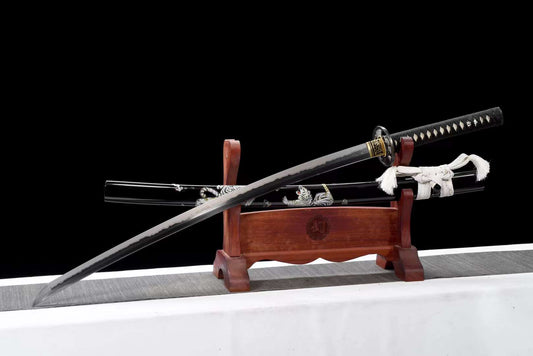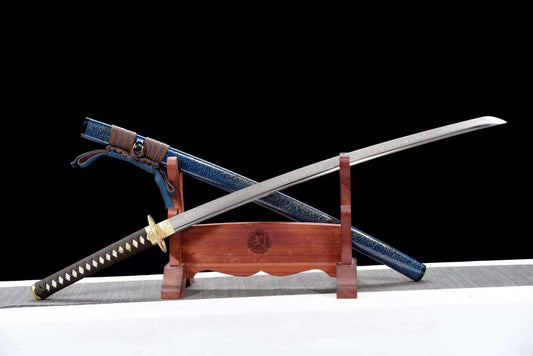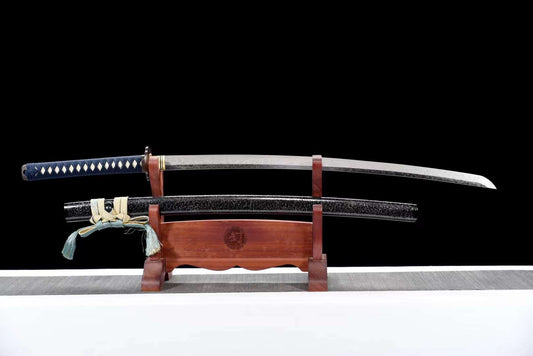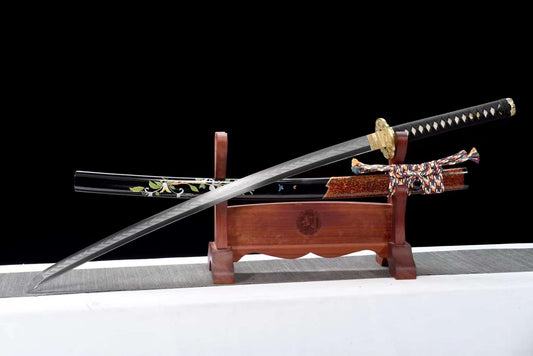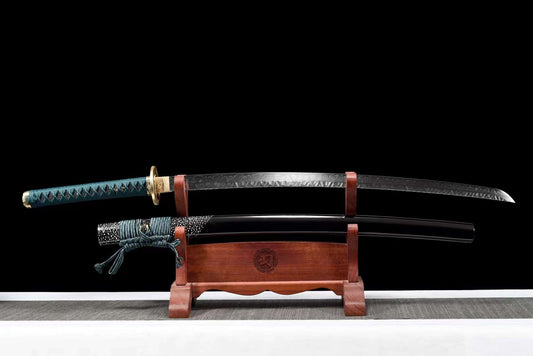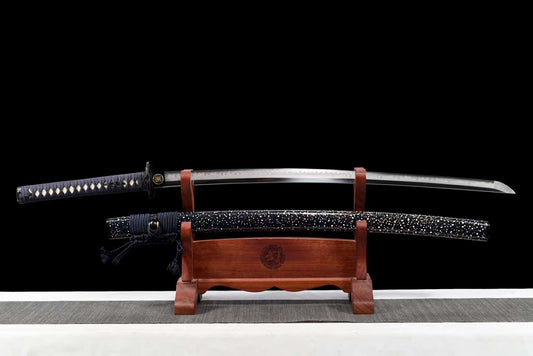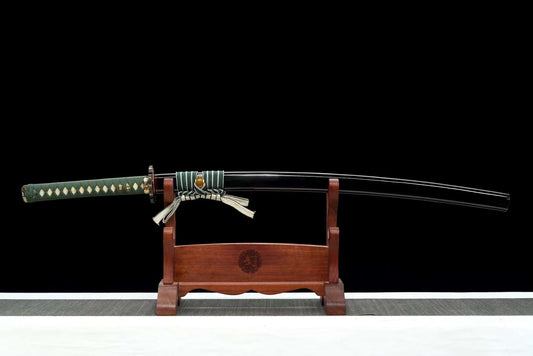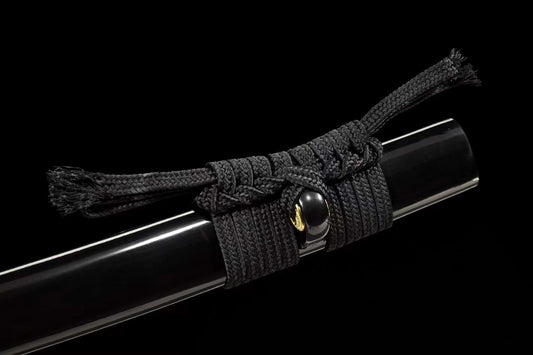T10 Steel Katana Collection — Fine Grain, Bold Edge, Photogenic Hamon
Discover the presence and precision of a T10 steel katana. Celebrated for its fine-grained structure and high carbon content, T10 supports keen edges, crisp bevels, and striking polish that reads beautifully on camera and in person. If you want a blade with confident bite, luminous highlights along the shinogi, and a finish that elevates any display, this is the steel that delivers.
Why Choose a T10 Katana?
The appeal of T10 tool steel begins with its microstructure. A tight grain enables high hardness at the edge while preserving resilience in the spine when properly heat treated. In practice, that means clean lines, decisive reflections, and a blade personality that holds detail under soft studio lighting and LED backdrops. Collectors appreciate how a T10 blade renders the yokote and kissaki; cosplayers value the balance that supports natural posing and dynamic angles.
Clay Tempering, Hamon & Edge Personality
Many pieces in this range are clay tempered to create differential hardness and a visible hamon. Whether you prefer a serene suguha line or a lively midare wave, T10’s polish brings out contrast and activity without washing out geometry. The result is a collector-grade katana with a sharp visual signature that anchors a premium shelf, glass case, or streaming setup.
Geometry, Balance & Fittings
Expect deliberate proportions that make the most of T10’s strengths. A well-defined shinogi-zukuri profile frames the bevels, a properly shaped kissaki catches light at the tip, and an optional bohi adds agility and audible tachikaze. Tight ito wrapping over quality samegawa, a fitted habaki, and curated tsuba, fuchi-kashira, and lacquered saya complete a cohesive presentation worthy of close-up viewing.
T10 vs. Other High-Carbon Steels
Compared to 1060, a T10 steel katana tends to exhibit crisper lines and greater edge potential when polished to a high standard. Against 1095, T10’s fine grain often yields similarly assertive edges with a refined feel under light. Your choice comes down to the look and handling you prefer: T10 emphasizes clarity and contrast, making it a favorite for photogenic hamon and detailed blade geometry.
Who This Collection Suits
If you’re seeking a centerpiece that balances cinematic presence with disciplined craftsmanship, a T10 katana is an excellent fit. Dedicated collectors will appreciate the polish depth and line fidelity; creators and cosplayers will notice how the blade reads instantly on camera; enthusiasts curating themed displays will value how the fittings and hamon harmonize across a multi-sword lineup.
Care & Preservation
Preserve the finish by storing your T10 steel katana in a dry environment, gently wiping surfaces after handling, and applying a thin protective oil film when needed. Avoid edge-to-edge contact, hard impacts, and abrasive materials to maintain polish, linework, and hamon definition for years of pristine presentation.
FAQ
Is T10 better than 1095 or 1060?
“Better” depends on priorities. T10 offers fine grain for crisp edges and vivid polish, 1095 emphasizes maximum hardness potential and sharp definition, and 1060 balances resilience with approachable edge behavior. Choose based on the look and handling you prefer.
Do I need a bohi on a T10 blade?
A bohi reduces weight and adds audible feedback in motion, great for cosplay and dynamic display. A no-bohi profile keeps mass for gravitas and an unbroken mirror line—ideal for formal presentation.
Will a T10 katana show a real hamon?
When clay tempered, T10 can display a natural hamon with distinct activity. The exact look depends on the smith’s heat treatment and the polishing approach.
Choose clarity, choose contrast.
Select a T10 steel katana that matches your aesthetic—minimal and refined or bold and expressive—and let fine grain, precise geometry, and a photogenic hamon define the centerpiece of your collection.



